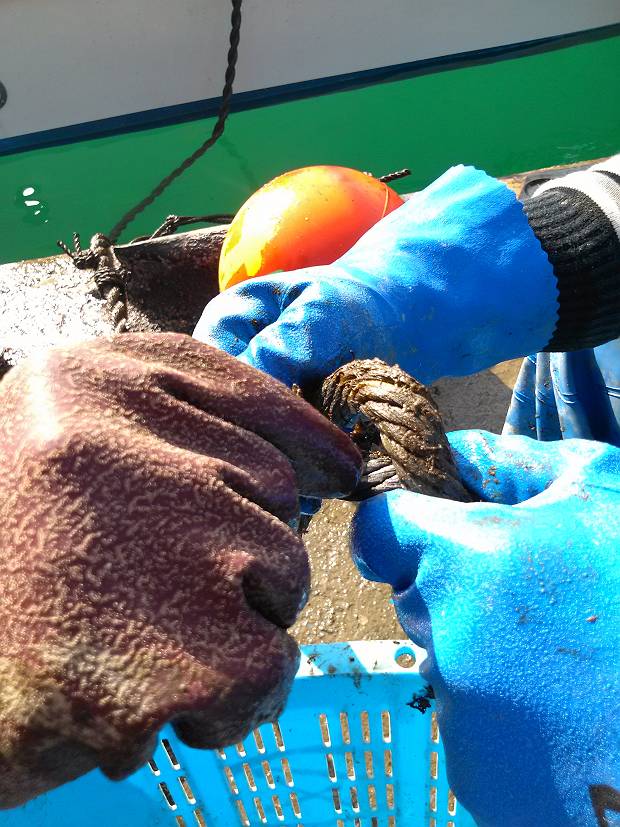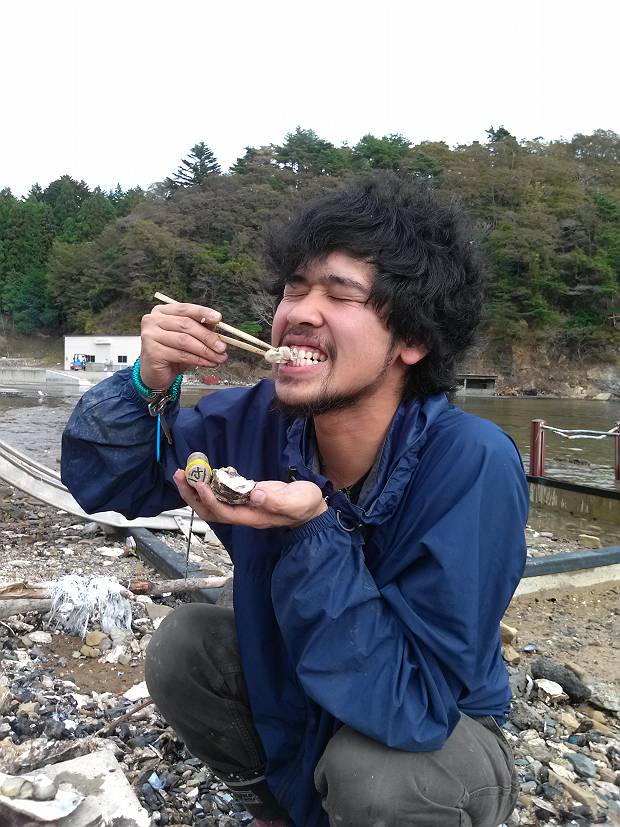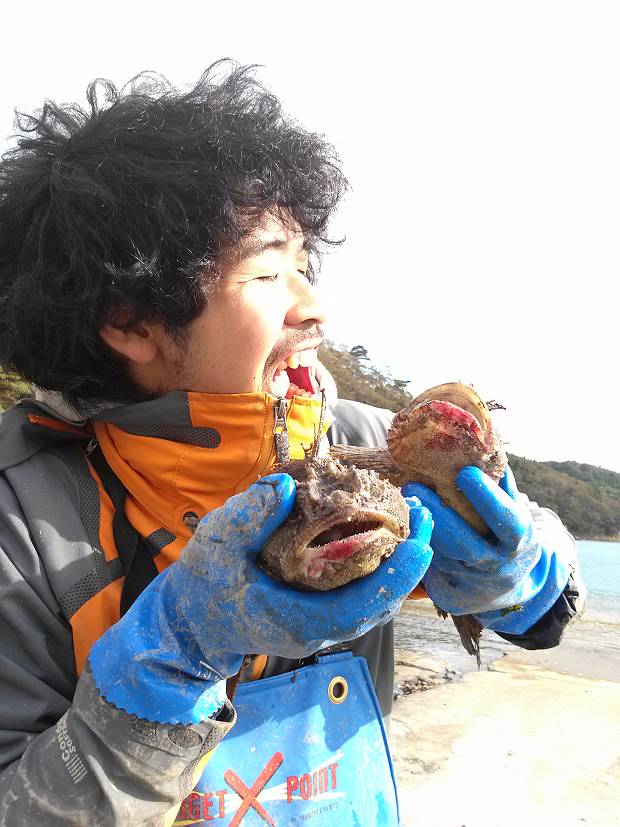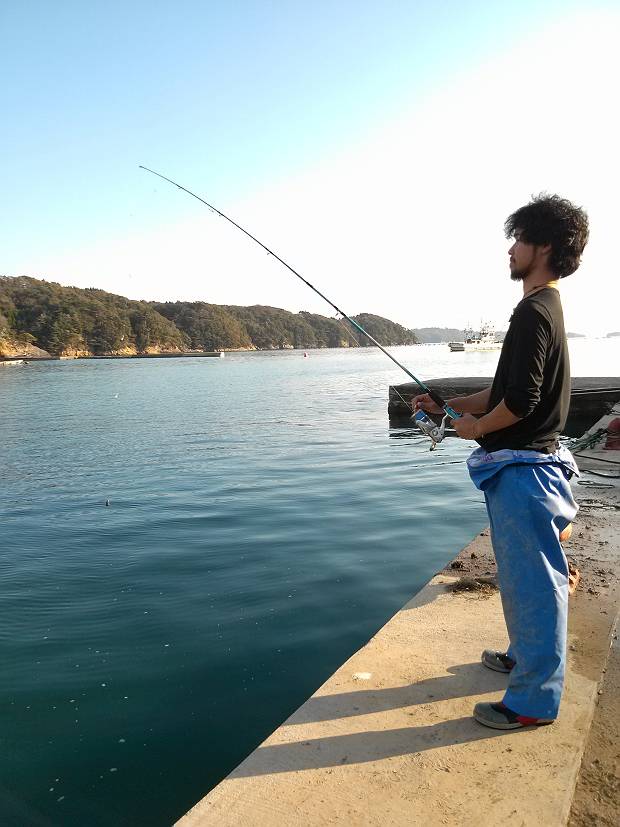
Activity Reports
“Now, Here Project”: People need People – Providing Sustainable Support for Ishinomaki’s Fishing Industry
March 16, 2013
A new project was launched in January 2013!
As the post-tsunami aid efforts move into assistance for the long-term reconstruction and economic rehabilitation of the afflicted areas, it is vital to take into consideration the character of the region and the difficulties it was facing even prior to the disaster to ensure that the support can be sustainable.
As in many other rural areas in Japan, Ishinomaki is suffering from the effects of an aging population. This is particularly the case on the Oshika peninsula area, which depends entirely on the fishing industry.
The 2011 Great East Japan Earthquake & Tsunami damaged 100% of the 44 fishing ports, as well as 200 fish processing factories in Ishinomaki. Most fishing facilities and fishing gear was lost or damaged, and more than 90% of fishing boats were rendered unusable.
Recovery of the fishing industry is key to the regeneration of the area, but the human resources crisis – exacerbated by the disaster, since approximately 11,000 people were either lost in the tsunami or have since left the area – is crucial.
Peace Boat now aims to contribute to the regeneration of the local economy by finding ways to match the needs of the local people with the enthusiasm and energy of young people from outside of the region. We have launched the “Now, Here Project,” inspired by the worldwide “WWOOF” movement. This aims to act as a liaison between the fishing families who need help with their businesses and people who wish to stay with them and support their farming in return for food and accommodation.
Here is a story of the experiences of a participant, Yuuki, and how he spent his four days in Fukkiura, a fishing village on the Oshika Peninsula.
——————————————————————————————————————-
7:00 Wake Up – Breakfast
8:00 Begin seeding seaweed
9:00~10:30 Take a break and stroll on the beach
10:30~12:00 Sorting oysters and mussels
12:00~13:00 Cooking fresh oysters and mussel for lunch
13:00 Finish Work
13:00~14:00 Fishing basket: caught rockfish, bokke, and greenling!
14:00~16:00 Surf-fishing: caught a bokke!
16:30 Return to the accommodations at the Fukkiura Hall.
18:00~20:30 Take a bath at the beneficiary fisherman’s home and chat
20:30~23:00 Meet with other participants at the Fukkiura Hall and chat
23:00 Sleep
——————————————————————————————————————-

Seeding seaweed

Oysters taste great!

The bokke almost bit me!!

After work, we fish.
Yuuki looks back on his days spent experiencing life at the seashore:
“Honestly speaking, I’m glad I participated. The time spent was a lot of fun. It was certainly because of working with the fishermen, and it’s definitely an experience you can’t normally do, but during those four days, I felt within myself something you might call excitement for Fukkiura, and as I worked together with the fishermen, the feeling that I became a sea person myself grew.
I got the impression when speaking with the fishermen that everyone faces different concerns and hardships in reality – the people still living by the sea, those who live in temporary housing near the sea, and finally those who are now living in temporary housing in the town an hour from the sea. Through living those four days together there, I experienced what it was like to become a member of the fishing community.
In seeing how the earthquake affected them, and knowing the reality of it all, plus catching and eating the rockfish, bokke (winter specialty of Ishinomaki!) and greenling, I had a unique seaside experience.”
Even learning about the current condition of the seashore and working with the fishermen helps a little.
The “Now, Here Project” is in full effect!!!
TAGS: fishing industry • Oshika Peninsula • Tsunami • Volunteer • Volunteers



